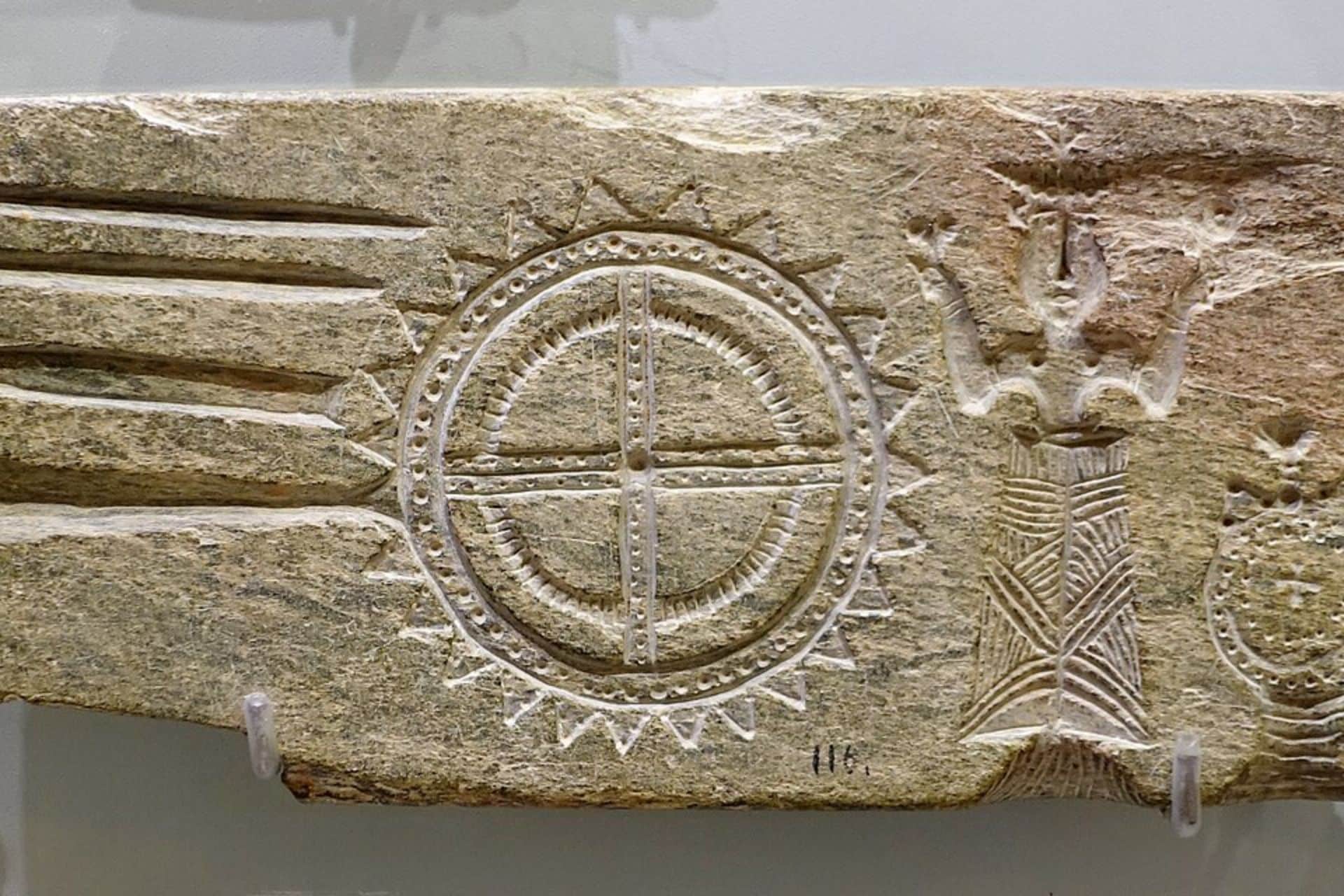

Near the eastern edge of Crete, archaeologists have uncovered evidence of a once-thriving Minoan city that may have held advanced knowledge of astronomy, potentially home to what some researchers now believe could be the first portable eclipse calculator, created over 1,400 years before the famous Antikythera mechanism.
The remains of this Bronze Age city lie close to the modern village of Palaikastro. Though its original name has been lost to time, researchers believe the settlement played a key commercial role in the region before its abandonment around 1200 BCE.
Its port, once a vital connection to the wider Mediterranean, now lies submerged beneath the waters near Chiona beach.
In 1899, a local farmer discovered two curious stone slabs about 150 meters northeast of the village. The slabs, made of schist, were handed over to the authorities and eventually reached archaeologist Stefanos Xanthoudidis.
Recognizing their significance, Xanthoudidis sent them to the Heraklion Museum and published his findings the following year in the journal of the Archaeological Society of Athens.
He identified the slabs as casting moulds from the Minoan period. Today, they are known as the Minoan Moulds of Palaikastro and remain on display at the Heraklion Archaeological Museum. Each measures 22.5 centimeters wide, 10 centimeters high, and only 2 centimeters thick—dimensions that make them exceptionally fragile.
The first mould is carved with a series of striking symbols. At the center is a large disc with cross-shaped spokes and a notched edge, described by some specialists as resembling a gear.

Beside it, a female figure stands with arms raised, holding flowers. At the end of the mould, another disc is depicted—this one bearing a cross in its center, set above a crescent and a striped base.
Arthur Evans, the British archaeologist known for his work at Knossos, proposed that the gear-like disc symbolized both the Morning Star and the sun.
He interpreted the smaller disc as representing a goddess of the underworld, with the central cross serving as a symbol of the Evening Star. The back of the same mould features the Horns of Consecration—an iconic Minoan religious symbol—and a trident.

The second mould bears two double axes, or labrys, on its front, a powerful symbol in Minoan culture. On the back, a female figure appears once more, holding a double axe in each hand.
Researchers have dated both moulds to between 1790 and 1370 BCE and believe they were used to cast metal objects.
But in 2013, a new hypothesis proposed that the first mould may have been used to produce a spoked disc functioning as a type of sundial.
Based on this theory, the Minoans may have developed a device to determine geographic latitude and predict lunar and solar eclipses. The straight lines near the central disc may have served as moulds for pegs and a tool resembling a compass or caliper, designed to work with the dial.
The study also demonstrated that the instrument could still be used today to forecast eclipses with surprising accuracy. If confirmed, the Palaikastro moulds may represent the earliest known example of a portable analog calculator, created more than a millennium before the Antikythera mechanism.
This possibility has opened a new chapter in understanding the technological capabilities of the Minoans, suggesting their scientific knowledge may have been far more advanced than previously believed.
